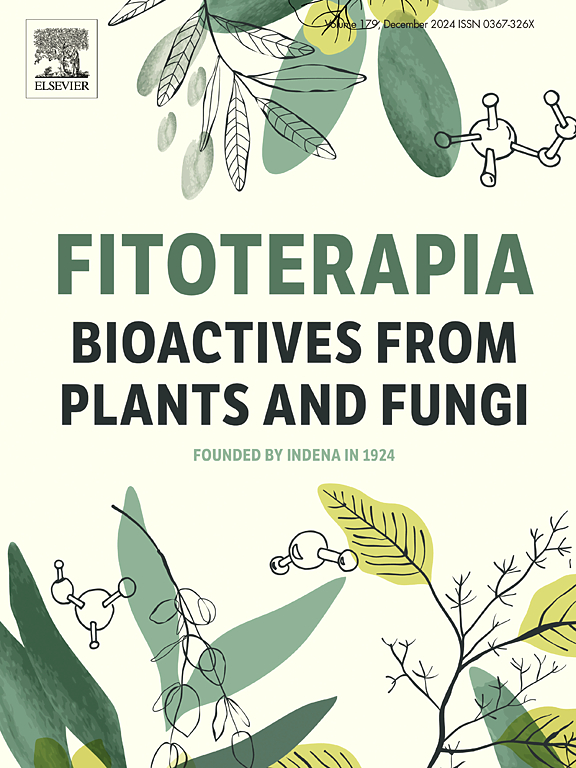In silico molecular docking and predictive ADME properties, in vitro antioxidant scavenging capacities, and in vivo pharmacological activities to study the potential of Pterocarpus mildbraedii's Harms (Fabaceae) in preventing vaginal dysbiosis and risk factors for cardiovascular disease in an estropause rat model
IF 2.5
3区 医学
Q3 CHEMISTRY, MEDICINAL
引用次数: 0
Abstract
Vaginal dysbiosis (VaD) is a common issue among menopausal women, who are particularly susceptible to cardiovascular disease (CVD). Pterocarpus sp. are known to induce estrogen-like activities, which are the key pathways for menopause-related disorders. This study aims to evaluate the potential of Pterocarpus mildbraedii water extract on VaD and CVD risk factors using an estropause (EP) rat model. Furthermore, predictive ADME properties and molecular docking with target proteins were assessed to develop alternative medicinal treatments for menopause. The secondary metabolites in P. mildbraedii water extract (Pm) were analyzed using UHPLC-MS and quantitative phytochemistry methods. The extract's ability to scavenge free radicals was evaluated using DPPH, ABTS, and FRAP tests. Molecular docking assessed the extract's binding ability to various receptors. SwissADME and Molinspiration were utilized to predict its pharmacokinetic and bioactivity properties. Subsequently, the therapeutic potential of Pm was assessed in rats, focusing on its estrogen-like, eubiotic, and cardioprotective activities. UHPLC-MS enables us to identify several compounds. Predictive ADME analyses have indicated that most compounds comply with Lipinski's Rule of Five for oral drugs. Additionally, they inhibit CYP1A2 and bind to several receptors and enzymes through conventional hydrogen bonding. In rats, ovariectomy-induced EP reduced glycogen levels and vaginal lactic acid and decreased in the population of Lactobacillus spp., which is characteristic of VaD. This condition also increases CVD risk factors. Overall, this study underscores the potential of Pterocarpus mildbraedii in preventing VaD and CVD risk factors related to hypoestrogenism. This extract positions itself as a promising alternative treatment for menopause-related disorders.

求助全文
约1分钟内获得全文
求助全文
来源期刊

Fitoterapia
医学-药学
CiteScore
5.80
自引率
2.90%
发文量
198
审稿时长
1.5 months
期刊介绍:
Fitoterapia is a Journal dedicated to medicinal plants and to bioactive natural products of plant origin. It publishes original contributions in seven major areas:
1. Characterization of active ingredients of medicinal plants
2. Development of standardization method for bioactive plant extracts and natural products
3. Identification of bioactivity in plant extracts
4. Identification of targets and mechanism of activity of plant extracts
5. Production and genomic characterization of medicinal plants biomass
6. Chemistry and biochemistry of bioactive natural products of plant origin
7. Critical reviews of the historical, clinical and legal status of medicinal plants, and accounts on topical issues.
 求助内容:
求助内容: 应助结果提醒方式:
应助结果提醒方式:


